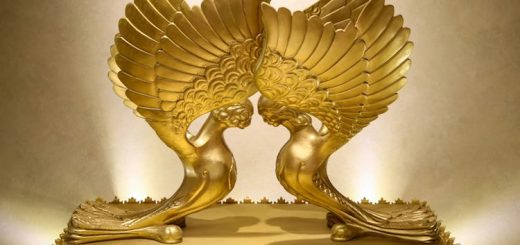The kruvim, three-dimensional depictions of two winged childlike beings, a male and female, formed from the gold of the kappores, the cover of the aron, are described as “facing one another” (Shemos 37:9).
The Gemara (Bava Basra, 99a) notes that in Divrei Hayamim II, the pasuk describes them as facing toward the kodoshim (3:13), and explains – on the presumption that the kruvim represent Hashem and Klal Yisrael – that the kruvim were animated, facing one another “when the Jewish people do the will of Hashem,” and outward when they do not.
Which makes an account of the destruction of the Beis Hamikdash particularly strange. In Yoma 54b, the Gemara describes how the enemy entered the Bayis and saw the kruvim (or a depiction of them) entwined “like a man and his beloved.” They mocked what they could only see as a pornographic icon in the Jews’ holiest place.
The obvious question: Why, at a time when the Jews had apparently not been doing Hashem’s will – after all, the Beis Hamikdash was being razed! – were the kruvim not only not facing away from one another but embracing?
A moving answer is related in the name of the Maggid of Mezritch. He notes that halacha requires a husband to express his love for his wife before embarking on a long trip. Hashem, thus, was demonstrating his love for His people when He was about to “leave” them for a long period of exile.
I wonder, though, if there may be another message in the puzzling image of the entwined kruvim: That, just as a truly responsible parent facing a need to punish his child does so with anguish and out of pure love, so was Hashem “pained” and “loving” toward His people when they required punishment.
Yes, when the Jews were not doing His will, the kruvim faced away from one another. But, afterward, at the time of their necessary punishment, there was only pure love. And, if so, wherever they may be today, the kruvim are still in embrace.
© 2023 Rabbi Avi Shafran
